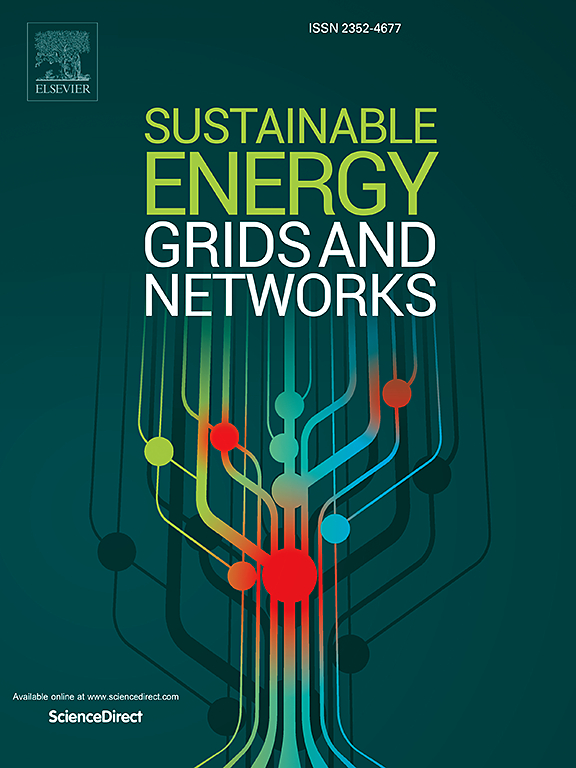基于边缘图卷积网络强化学习的电力系统暂态稳定性紧急电压控制策略
IF 4.8
2区 工程技术
Q2 ENERGY & FUELS
引用次数: 0
摘要
应急控制对维持电力系统的稳定性至关重要,是防止故障引发不稳定和连锁故障的关键防御机制。欠压甩负荷是一种常用且有效的应急控制方法。然而,随着电力系统的复杂性和规模不断扩大,以及不确定性因素的增加,传统方法在计算速度、准确性和可扩展性等问题上举步维艰。深度强化学习在解决电力系统决策问题方面具有巨大潜力。然而,现有的深度强化学习算法在有效利用各种运行特征方面存在局限性,从而影响了应急控制策略的可靠性和效率。本文通过将边缘图卷积网络与强化学习相结合,提出了一种用于增强暂态稳定性的实时紧急电压控制策略的创新方法。该方法将传统的紧急控制优化问题转化为一个顺序决策过程。通过利用边缘图卷积神经网络,它能有效地提取电力系统运行状态与节点分支信息之间的相关性以及所涉及的不确定性因素等关键信息。此外,还引入了剪切双 Q 学习、延迟策略更新和目标策略平滑,有效解决了深度确定性策略梯度算法中的高估和对超参数异常敏感的问题。通过 IEEE 39-bus 系统和 IEEE 118-bus 系统验证了所提方法在紧急控制决策中的有效性。本文章由计算机程序翻译,如有差异,请以英文原文为准。
Emergency voltage control strategy for power system transient stability enhancement based on edge graph convolutional network reinforcement learning
Emergency control is essential for maintaining the stability of power systems, serving as a key defense mechanism against the destabilization and cascading failures triggered by faults. Under-voltage load shedding is a popular and effective approach for emergency control. However, with the increasing complexity and scale of power systems and the rise in uncertainty factors, traditional approaches struggle with computation speed, accuracy, and scalability issues. Deep reinforcement learning holds significant potential for the power system decision-making problems. However, existing deep reinforcement learning algorithms have limitations in effectively leveraging diverse operational features, which affects the reliability and efficiency of emergency control strategies. This paper presents an innovative approach for real-time emergency voltage control strategies for transient stability enhancement through the integration of edge-graph convolutional networks with reinforcement learning. This method transforms the traditional emergency control optimization problem into a sequential decision-making process. By utilizing the edge-graph convolutional neural network, it efficiently extracts critical information on the correlation between the power system operation status and node branch information, as well as the uncertainty factors involved. Moreover, the clipped double Q-learning, delayed policy update, and target policy smoothing are introduced to effectively solve the issues of overestimation and abnormal sensitivity to hyperparameters in the deep deterministic policy gradient algorithm. The effectiveness of the proposed method in emergency control decision-making is verified by the IEEE 39-bus system and the IEEE 118-bus system.
求助全文
通过发布文献求助,成功后即可免费获取论文全文。
去求助
来源期刊

Sustainable Energy Grids & Networks
Energy-Energy Engineering and Power Technology
CiteScore
7.90
自引率
13.00%
发文量
206
审稿时长
49 days
期刊介绍:
Sustainable Energy, Grids and Networks (SEGAN)is an international peer-reviewed publication for theoretical and applied research dealing with energy, information grids and power networks, including smart grids from super to micro grid scales. SEGAN welcomes papers describing fundamental advances in mathematical, statistical or computational methods with application to power and energy systems, as well as papers on applications, computation and modeling in the areas of electrical and energy systems with coupled information and communication technologies.
 求助内容:
求助内容: 应助结果提醒方式:
应助结果提醒方式:


